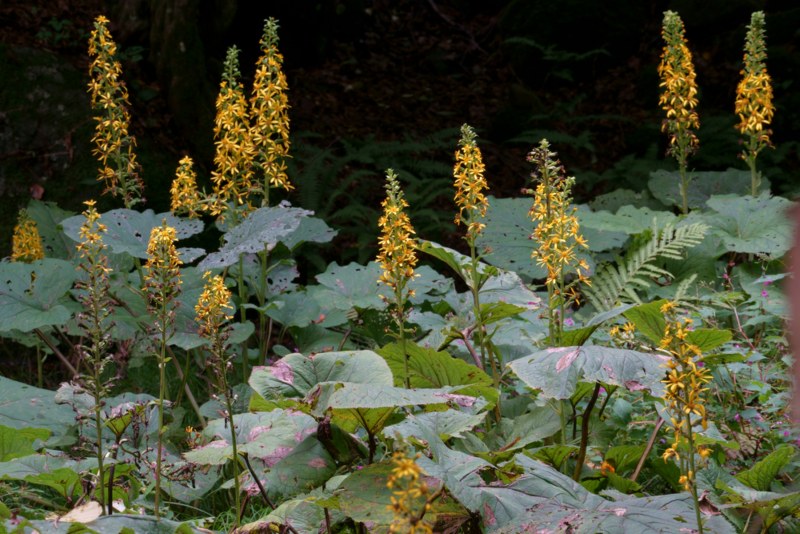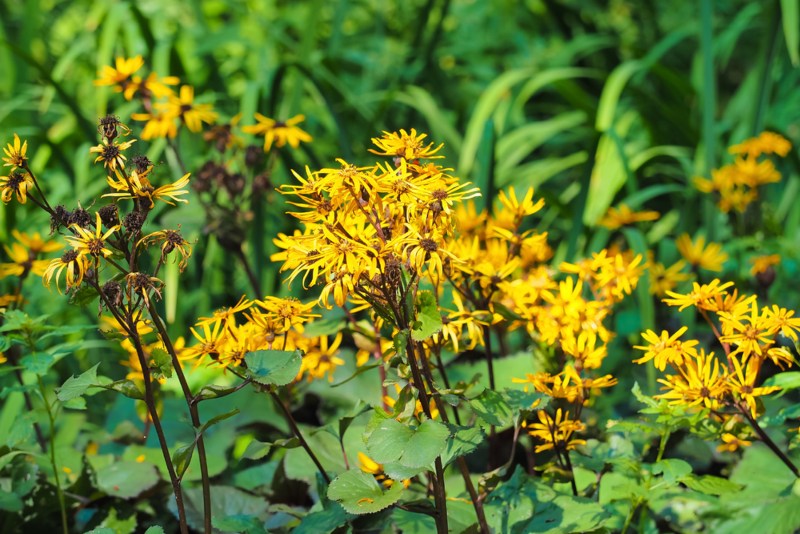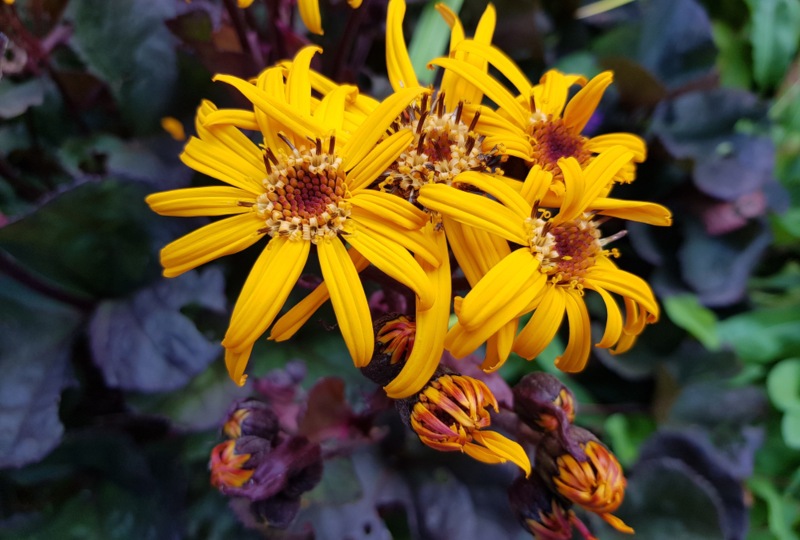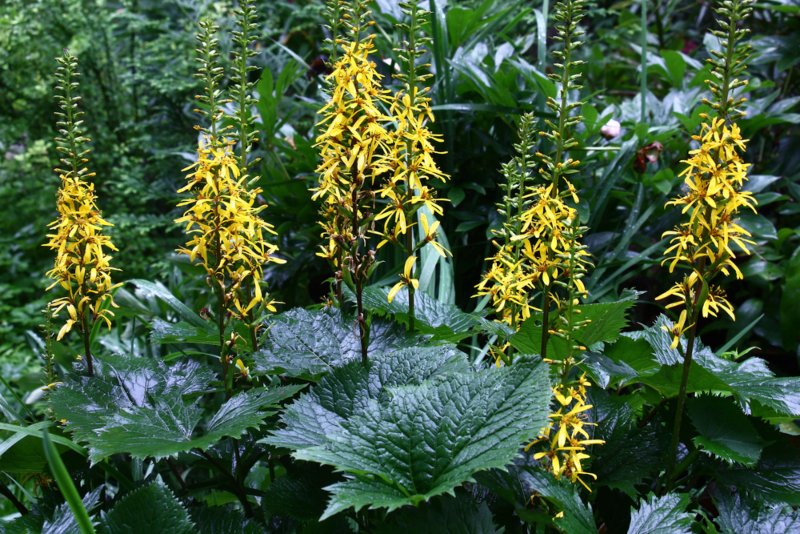Ligularia, also known as the Leopard Plant, is sometimes referred to by its botanical name ligularia dentata.

The color of a Ligularia’s leaves depends on the exact variety. The color is anywhere from deep to light, faded green color. In addition to the Ligularia’s lush and kidney-shaped foliage, its bright golden blooms make it a favorite among botanists and plant enthusiasts across the country.
To learn more about how to grow and care for Ligularia, continue reading below.
| Botanical Name: | Ligularia (ligularia dentata) |
| Common Name(s): | Ligularia, Leopard Plant |
| Plant Type: | Asteraceae senecioneae genus from the Daisy family |
| Mature Size: | 3 to 4 feet tall with a width spread of 2 to 3 feet |
| Sun Exposure: | Partial sun or dappled sun; no direct sunlight |
| Water Needs: | Deep water and very wet roots |
| Soil Type: | Well-draining moist soil |
| Soil pH: | Between 6 and 7.5 pH |
| Bloom Time: | Early to late Summer |
| Maintenance: | Medium to high maintenance |
| Flower Color: | Yellow |
| Hardiness Zones: | 4-8 (USDA), hardy |
| Toxicity: | Not toxic |
Ligularia Care
A plant that loves rich and organic soil types, Ligularia also demands constant moisture and consistent care. The 3 to 4-foot tall plant will produce gorgeous bright yellow blooms when it’s happy. The flowers look like bunches of daisies pieced together in one big pointed clump-like shape.
To keep your Ligularia happy, keep the soil damp, add compost fertilizer, set in a shady area, and minimize movement if possible. Since these plants are native to Central and Southeast Asia, Ligularia can survive in humidity but do not need it to survive.

Light
A Ligularia’s light preference includes liking partial sun or dappled and sporadic shade. They should never be placed or planted in an area that receives direct sunlight, as this can cause their leaves to bleach and the plant’s entire stem to wilt. If a Ligularia is faced with harsh sunlight and hot conditions while blooming, the blooms will likely flop and end up bending the flower in half towards the ground.
Water
When Ligluarias are first planted, they require weekly or bi-weekly watering. Later, you only need to water them once per week to maintain their desired moisture levels. If you do not have the time to keep the soil of your Ligularia moist enough for them, consider utilizing drip irrigation or a sprinkler system that will automatically water your plants.
Temperature and Humidity
Since Ligulia plants become dormant in hot weather, they should be grown and kept in places that do not exceed around 75 degrees Fahrenheit during the hotter seasons. While they wilt during heat, they can recover if the evening cools down to below 66 degrees Fahrenheit.
In terms of humidity, Ligularia plants prefer humid weather but do not require it to thrive or grow to their maximum height ability.
Soil
Ligularia can tolerate soil with a pH level between 6 and 7.5 pH. It can also grow and bloom in various soil acidities and qualities. Ligularia likes soil that is consistently wet and that retains moisture through its soft and velvety texture. Therefore, Ligularia soil should be absorbent and humus-rich.
Fertilizer
If your Ligularia is planted in soil that is considered both rich and full of humus, you may be able to skip the fertilizer on your plants. Otherwise, organic compost mulch fertilizer should be applied twice, including once in early Spring and once in early Summer. A thick layer of this mulch will help the blossoms to reach full size and create striking aesthetic qualities with their growth.

Is Ligularia Toxic?
While Ligularia is not considered a deadly or even toxic plant, it should not be ingested by humans or animals. Though it won’t kill you, Ligularia is a purely decorative plant that is not meant to be eaten or consumed in any manner.
Potting and Re-potting Ligularia
If you transplant your Ligularia into a pot, your sections should be planted no further apart than 18 to 36 inches. After placing in the new pot, add around 1 inch of soil over the top of all of the Ligularia roots. When your Ligularia roots grow long enough, you can remove your transplant from the pot and plant in a shady area, either in the garden or another larger pot.

Propagating Ligularia
Ligularia can be propagated in the mid Spring to early Summer just as it begins to bloom. To properly propagate your Ligularia without causing damage to the original plant, consider following these steps:
- Cut a piece from the Ligularia root with a clean knife.
- Create divisions as needed.
- Pull the roots of your Ligularia apart.
- Place the roots into a mix of half water and half fertilizer.
- After your roots grow to at least 2 inches long, they can be planted.





